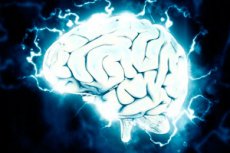New publications
In total darkness, the brain mobilizes its own previous life and visual experiences
Last reviewed: 30.06.2025

All iLive content is medically reviewed or fact checked to ensure as much factual accuracy as possible.
We have strict sourcing guidelines and only link to reputable media sites, academic research institutions and, whenever possible, medically peer reviewed studies. Note that the numbers in parentheses ([1], [2], etc.) are clickable links to these studies.
If you feel that any of our content is inaccurate, out-of-date, or otherwise questionable, please select it and press Ctrl + Enter.

In total darkness, the brain tells the visual system what it thinks should be there. In doing so, the brain mobilizes its own previous life and visual experience.
How does our brain react to complete darkness? Intuitively, one might assume that the visual cortex will be silent in the absence of stimuli. In extreme cases, its neurons will show very weak activity. When researchers first tried to record the spontaneous activity of brain neurons in the absence of any visual stimuli, they discovered a strong and coordinated response from the visual centers. This baffled them. Why does the brain waste time and energy analyzing an “empty picture” that comes to it from the outside? After some time, neurophysiologists came to the conclusion that the brain at this moment processes not what is in front of the eyes, but what could be.
The work of analyzing visual information relies on certain imaginary models of the surrounding world that the brain creates throughout its life, based on visual experience. If we, for example, look at a photograph of a city view, we will immediately understand that the people in the foreground are much smaller than the bridge or high-rise buildings in the background, although in the picture everything looks the other way around. And if we see an elephant standing behind a tree in a photograph, both halves of it will form one animal in our minds; it will never occur to us to take it for two independent “objects”. The brain constantly supplements the missing information and interprets the resulting image based on previous “pictures of reality”.
Several researchers from the University of Cambridge (UK) suggested that in the dark the brain does not actually rest, but transmits to us some image that we could see if it were not so dark. The experiment was conducted with several ferrets of different ages and consisted of the following. The animals were either placed in a dark room, or shown a film, or some unfamiliar objects were shown on the screen. All this was accompanied by a recording of the activity of the prefrontal cortex of the brain.
As the researchers write in the journal Science, in young animals, brain activity in the dark and activity in response to some visual stimuli differed sharply. But with age, brain activity in the dark increasingly resembled that in response to visual stimuli. Moreover, spontaneous (“dark”) neuronal activity was more similar to that demonstrated by the brain in response to a movie than to a sequence of unfamiliar images.
In other words, when there is a lack of information, the brain tries to fill it with the most natural elements that, in its understanding, should be there. And it takes these missing elements, roughly speaking, from the "image bank" that is formed throughout life. Obviously, an adult ferret fills the surrounding darkness with familiar images, and not with some geometric figures. But young and inexperienced animals have nothing to draw the surrounding darkness from: they do not have the necessary life and visual experience for this.
The same thing happens with humans: due to lack of information, the brain resorts to models of the surrounding reality that have formed over the course of life. This should certainly help in the treatment of various mental disorders such as schizophrenia, in which such an internal "world order" is disrupted. But at the same time, don't such results explain many, many social, cultural, political phenomena of our everyday life? After all, such models can be built not only for the visual system.

 [
[